Largest Jurassic pterosaur on record unearthed in Scotland
It had a wingspan of at least 8 feet.
During low tide on Scotland's Isle of Skye, a graduate student hunting for dinosaur bones looked down at the coastal rocks and made the discovery of a lifetime: the remains of the largest pterosaur on record from the Jurassic period.
Since collecting the specimen in 2017 — an eventful excavation that involved cutting out the pterosaur chunks with diamond-tipped saws and almost losing the fossil when the tide returned — researchers have studied its anatomy and determined that it's a previously unknown species. They gave the beast the Scottish Gaelic name Dearc sgiathanach (jark ski-an-ach), a double meaning of "winged reptile" and "reptile from Skye," as Skye's Gaelic name (An t-Eilean Sgitheanach) means "the winged isle."
D. sgiathanach would have sported a wingspan of more than 8 feet (2.5 meters) long, a wild size for a pterosaur dating to the Jurassic period (201.3 million to 145 million years ago), the team said.
"Dearc is the biggest pterosaur we know from the Jurassic period, and that tells us that pterosaurs got larger much earlier than we thought, long before the Cretaceous period, when they were competing with birds — and that's hugely significant," study senior researcher Steve Brusatte, a professor and personal chair of paleontology and evolution at the University of Edinburgh, said in a statement.
Related: Photos: Ancient pterosaur eggs & fossils uncovered in China
Pterosaurs (which are not dinosaurs) are the first known vertebrates to have evolved powered flight — a feat they accomplished about 50 million years before birds did. The oldest pterosaurs on record date to about 230 million years ago, during the Triassic period, and it was previously thought that they didn't reach huge sizes until the very late Jurassic or the Cretaceous period (145 million to 66 million years ago). For example, the largest pterosaur on record, Quetzalcoatlus, likely had a 36-foot-long (11 m) wingspan, meaning it was as large as a small passenger aircraft during its lifetime about 70 million years ago.
However, to fly, pterosaurs needed lightweight, delicate bones — a feature that means their remains rarely fossilized well.
Get the world’s most fascinating discoveries delivered straight to your inbox.
"To achieve flight, pterosaurs had hollow bones with thin bone walls, making their remains incredibly fragile and unfit to preserving for millions of years," study lead researcher Natalia Jagielska, a doctoral candidate of paleontology at the University of Edinburgh, said in the statement. "And yet our skeleton, about 160 million years on since its death, remains in almost pristine condition, articulated [the bones are in anatomical order] and almost complete. Its sharp fish-snatching teeth still retaining a shiny enamel cover as if he were alive mere weeks ago."
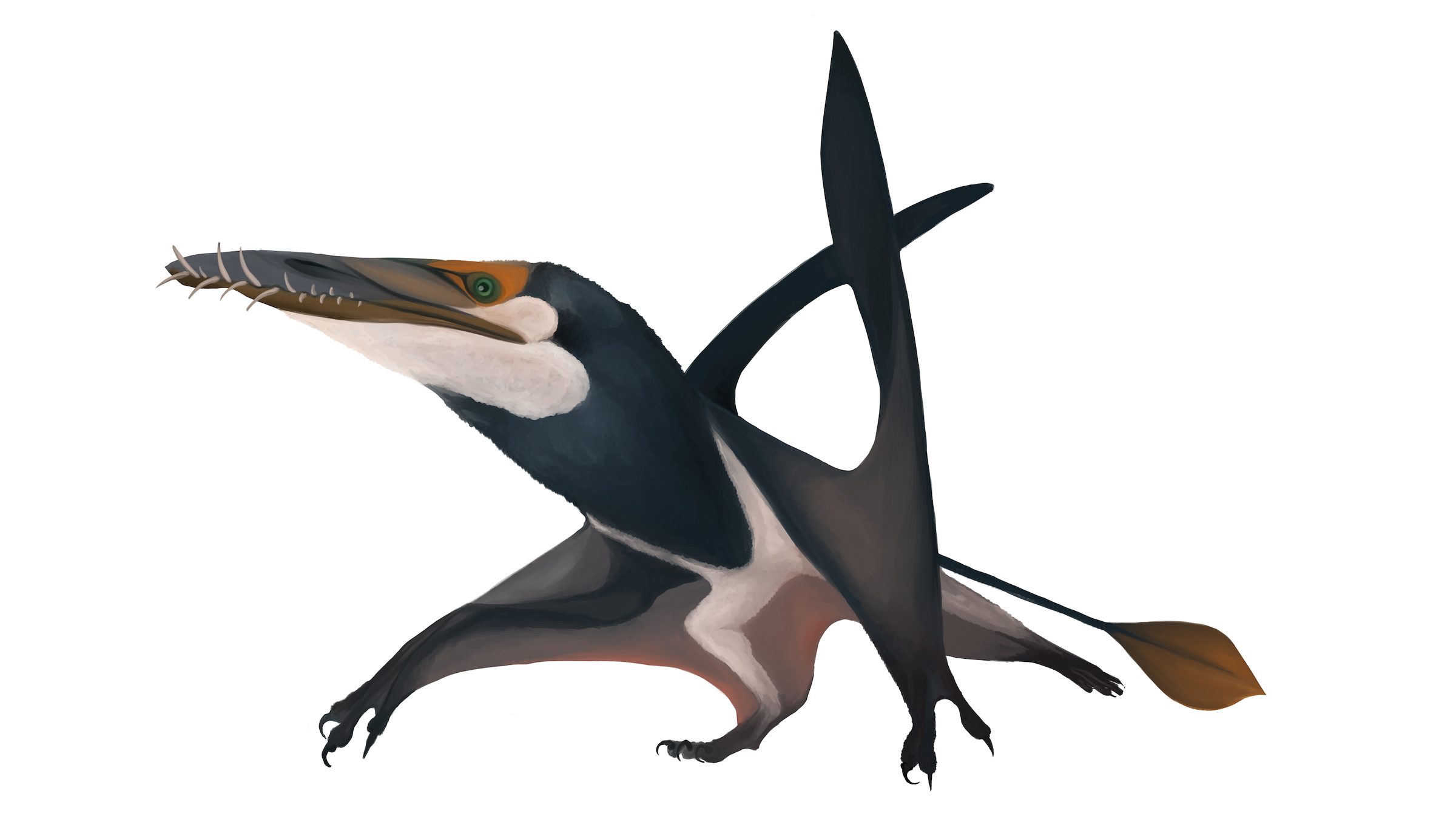

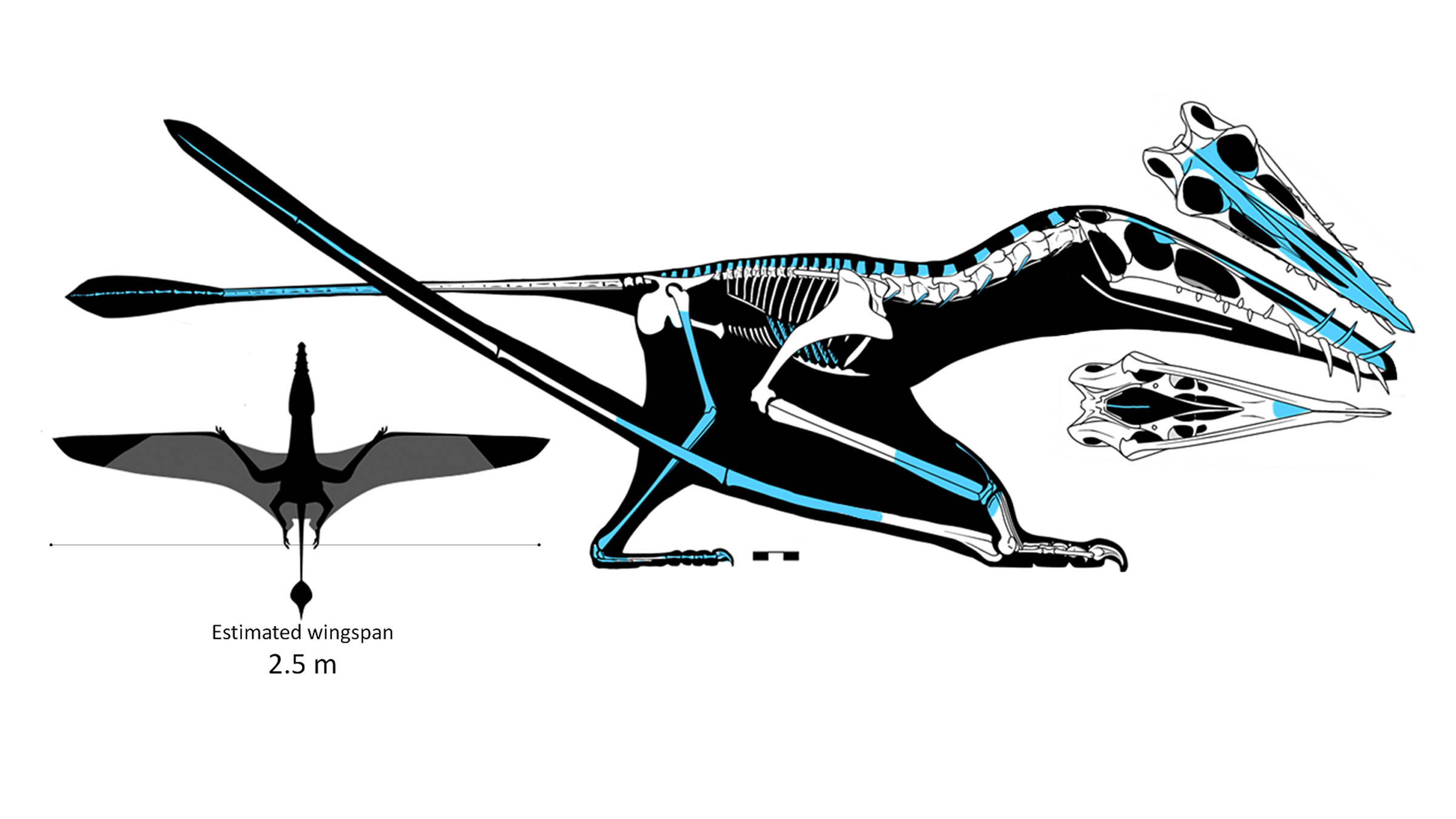
An analysis of the pterosaur's bone growth revealed that it wasn't fully grown. So, while this near-adult individual was roughly the size of today's largest flying birds, like the wandering albatross (Diomedea exulans), it's likely that an adult D. sgiathanach would have had an even longer wingspan, the researchers said. Moreover, computed tomography (CT) scans revealed that D. sgiathanach had large optic lobes, meaning it likely had excellent vision.
When D. sgiathanach was alive, the area that is now Scotland was humid and had warm waters, where the pterosaur likely fed on fish and squid with its sharp fangs and well-defined teeth, Jagielska said in a video.
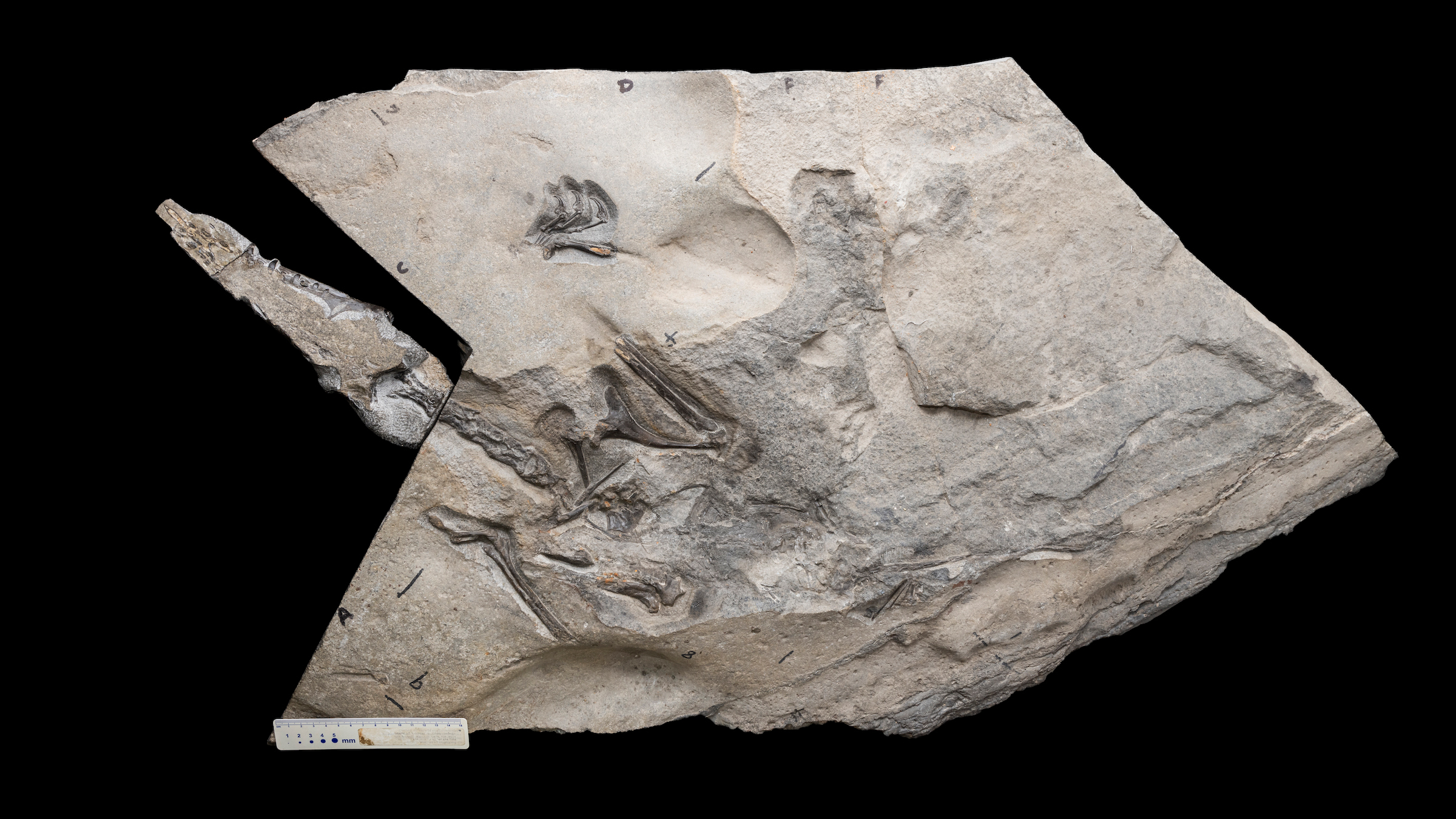
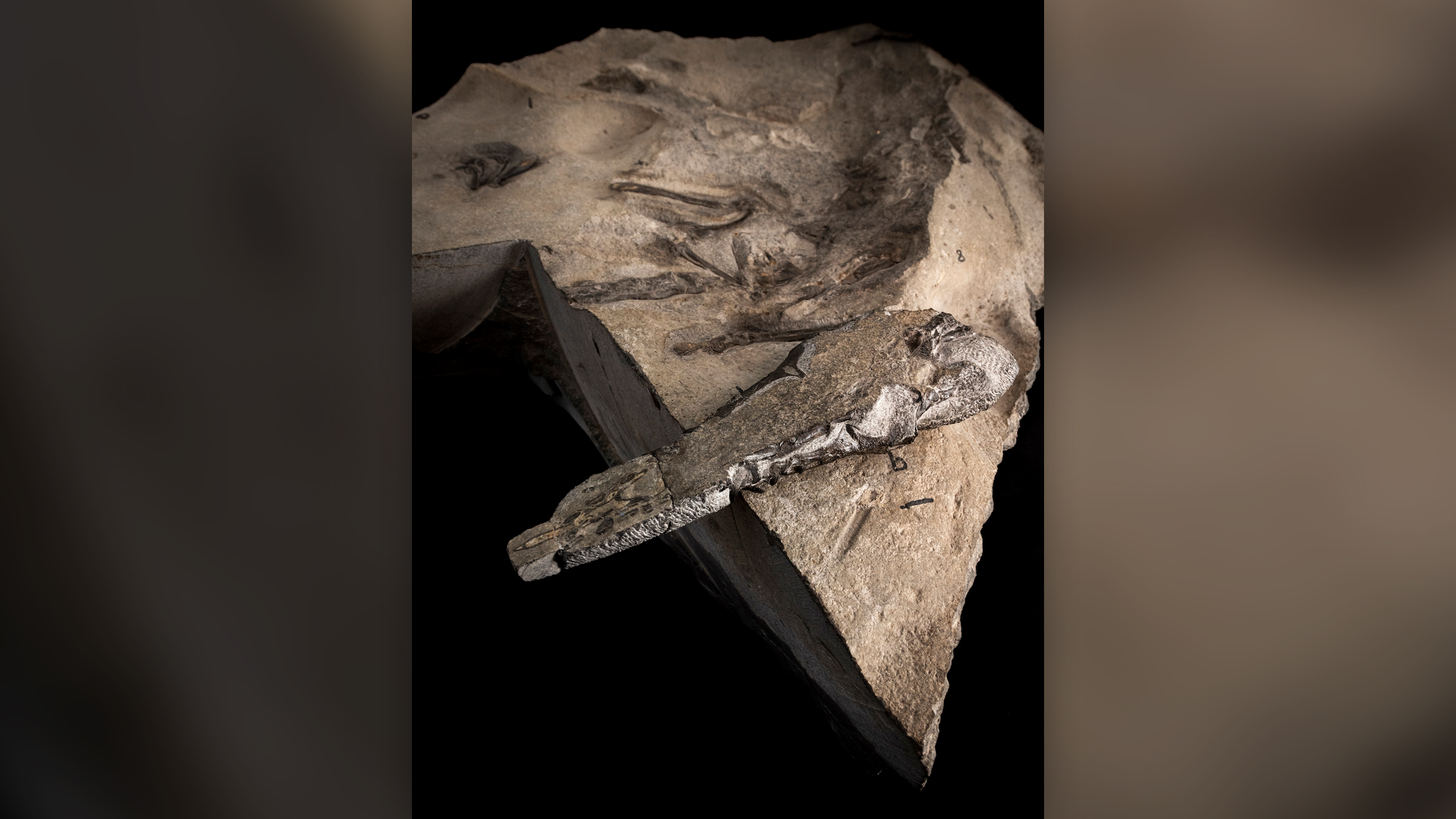


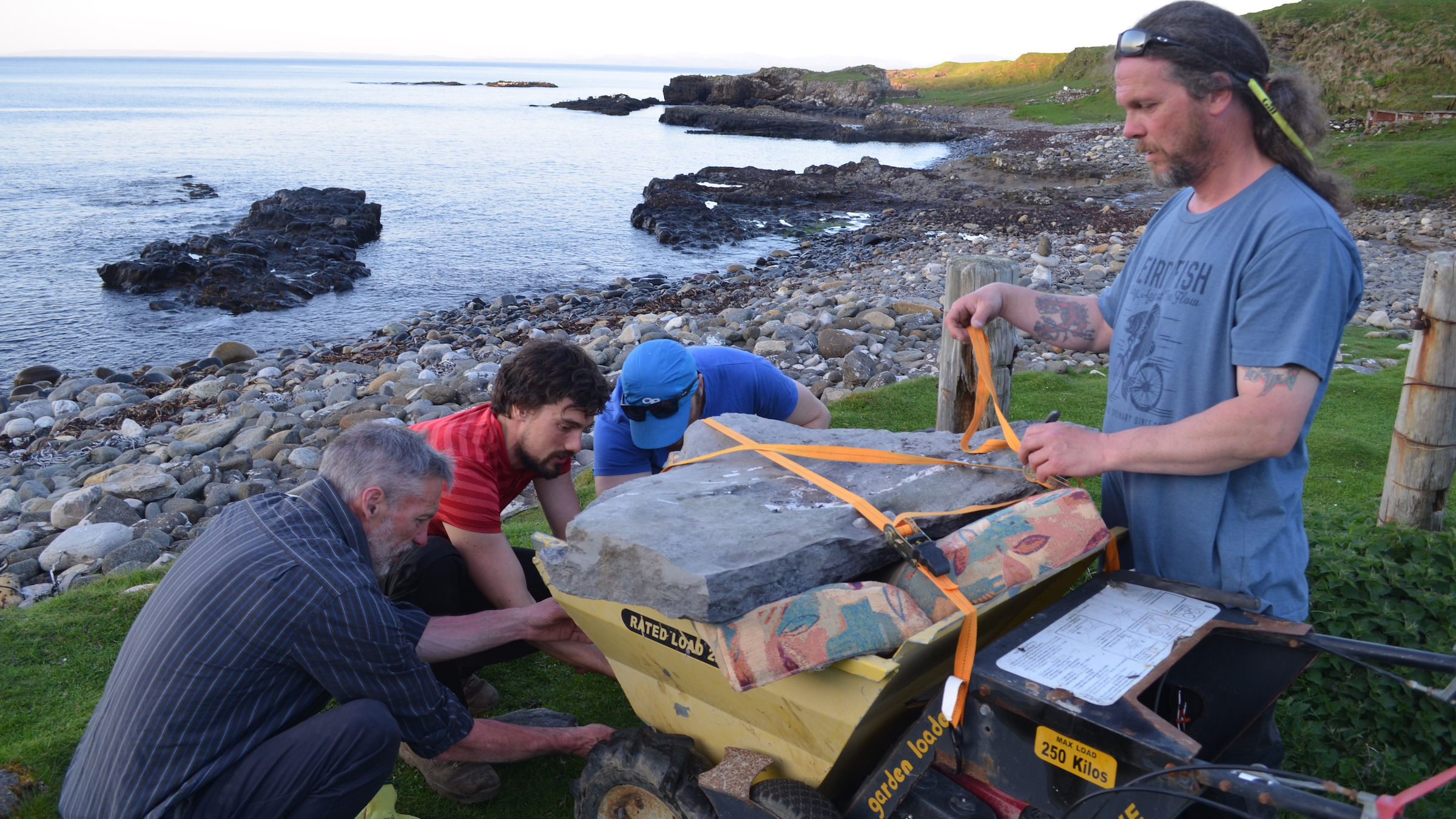
The excavation of this fossil at Rubha nam Brathairean (known as Brothers' Point) was found by Amelia Penny, a former doctoral student at in the School of GeoSciences at the University of Edinburgh who is now a research fellow in the School of Biology at the University of St Andrews in Scotland. The specimen will be added to the National Museums Scotland's collections for further study.
The excavation was paid for by the National Geographic Society. The study was published online Tuesday (Feb. 22) in the journal Current Biology.
Originally published on Live Science.

Laura is the managing editor at Live Science. She also runs the archaeology section and the Life's Little Mysteries series. Her work has appeared in The New York Times, Scholastic, Popular Science and Spectrum, a site on autism research. She has won multiple awards from the Society of Professional Journalists and the Washington Newspaper Publishers Association for her reporting at a weekly newspaper near Seattle. Laura holds a bachelor's degree in English literature and psychology from Washington University in St. Louis and a master's degree in science writing from NYU.



